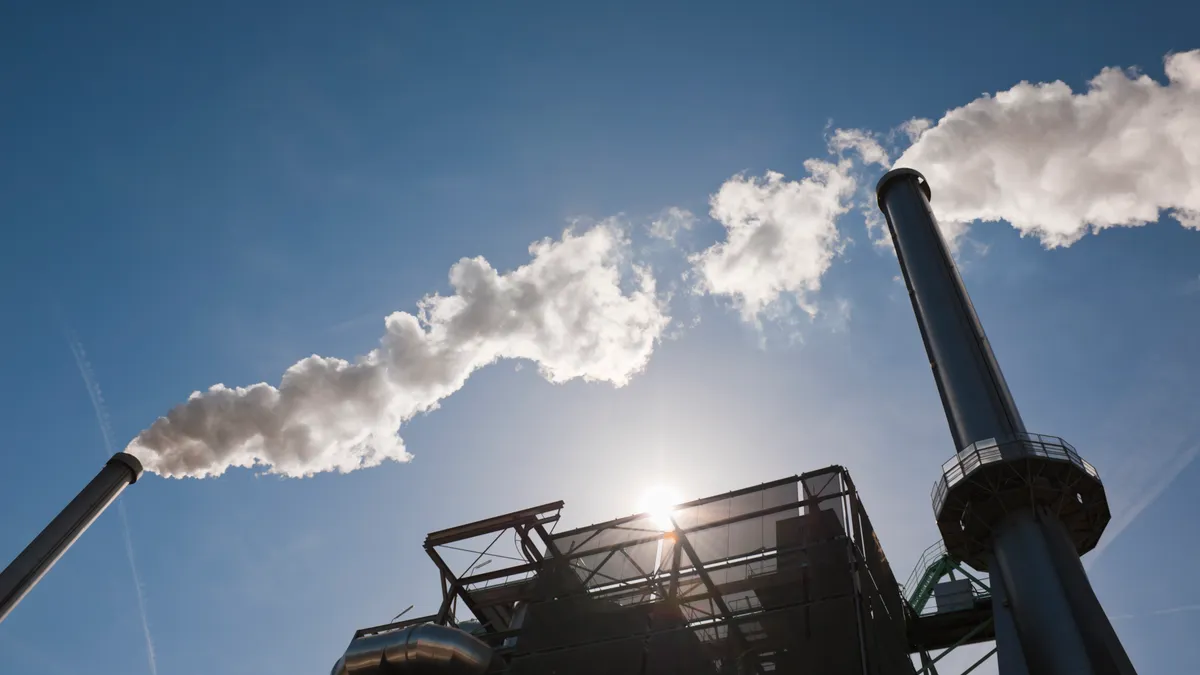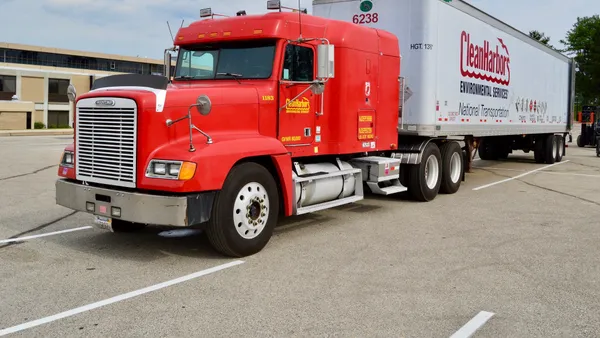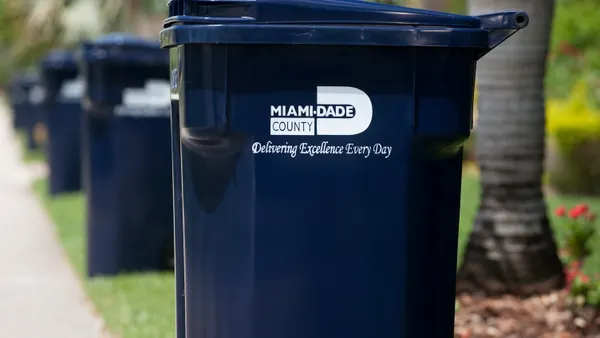Dive Brief:
- The U.S. EPA announced a proposed rule on Thursday that would tighten air emission standards for large MSW combustors. The update would apply to nine pollutants in the New Source Performance Standards and Emissions Guidelines which govern facilities that manage more than 250 tons of waste per day.
- The proposal comes after a lawsuit by environmental groups compelling the EPA to update its incinerator standards for just the third time in more than 30 years. The agency typically reviews the rules on a five-year basis, and its last update was due in 2011, per the lawsuit.
- The agency estimates the new standards would reduce regulated pollutants by 14,000 tons per year, with the majority of savings coming from a reduction in nitrogen oxide and sulfur dioxide emissions.
Dive Insight:
The EPA estimates this update would apply to 57 facilities with a combined 152 combustion units. It also noted the rule would improve air quality for the nearly 4 million people who live in communities within three miles of the affected facilities, a disproportionate number of which are considered low-income or part of communities of color.
The agency estimated health benefits from the proposed rule, due to reductions in particulate matter and ozone alone, could total $14 billion. EPA Administrator Michael Regan said the rule would also advance environmental justice for overburdened communities.
“President Biden believes every person deserves clean air to breathe and the opportunity to lead a healthy life, and EPA’s proposal is just the latest action to achieve this vision,” Regan said in a statement. “EPA is committed to working with communities and state, local, and Tribal governments to ensure that large facilities burning municipal waste utilize the most up-to-date and cost-effective control technologies to reduce pollution and protect public health.”
Tom Hogan, president of the Waste-to-Energy Association, said in emailed comments that his organization was reviewing the proposal. He said WTE facilities provide an “essential service” for more than 30 million Americans by recycling metals, preventing landfill emissions and creating energy.
“We look forward to continuing to work with EPA on establishing achievable emissions limits. WTE facilities are highly regulated and have been determined by multiple third-party studies to be a safe and effective way to divert waste from landfills and manage waste,” Hogan said.
The rule, which has been in the works for over a decade, comes after the EPA reviewed maximum achievable control technology for such facilities, along with other aspects of its standard for combustors.
In 2022, a coalition of groups including Earthjustice, the Sierra Club, East Yard Communities for Environmental Justice and Ironbound Community Corp. sued the agency for not updating the rules every five years as required by the Clean Air Act. A consent decree reached in May required the agency to update the rules by the end of 2023.
“For far too long, municipal waste incinerators have been exposing environmental justice communities across the nation to unnecessary risks and far dirtier air. We’re relieved to see the EPA is finally taking action to strengthen its oversight of waste incinerators, and we’re hopeful that the updated standards will provide overburdened communities with much-needed relief and meaningful improvements in air quality,” Jonathan Smith, a senior attorney for Earthjustice involved in the lawsuit, said in an email in response to Thursday’s announcement.
Besides setting new standards for a range of pollutants, the rule would also simplify the standard for nitrogen oxides and update the requirements for continuous monitoring of nitrogen oxides, sulfur dioxide and carbon monoxide during startup, shutdown and malfunctions, among other changes.
The rule also shifts facilities currently under the NSPS to the Emissions Guidelines regulatory pathway, effectively updating which facilities are considered “new” under the law.
The pollutant limits set under the Emissions Guidelines are less stringent than those for new sources. For instance, new facilities would be required to limit NOx emissions to 50 parts per million while existing facilities would be required to limit NOx emissions to 110 parts per million. Those limits were previously set at 150 and 180-250 (based on facility type) in 2006.
The nine pollutants regulated by the rule update are particulate matter, sulfur dioxide, hydrogen chloride, nitrogen oxides, carbon monoxide, lead, cadmium, mercury and dioxins/furans.
The EPA will accept public comments on the proposal for 60 days following its publication in the Federal Register, and also expects to hold an informational webinar about the proposal.











